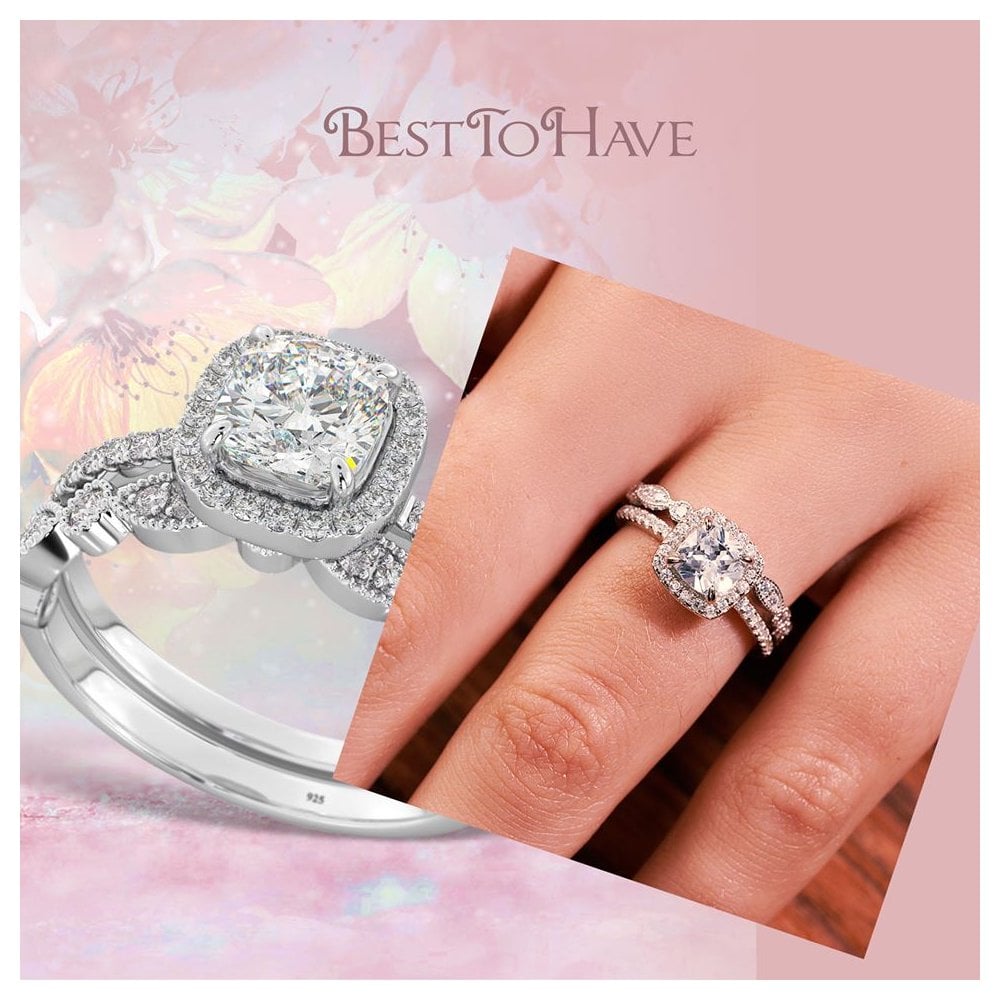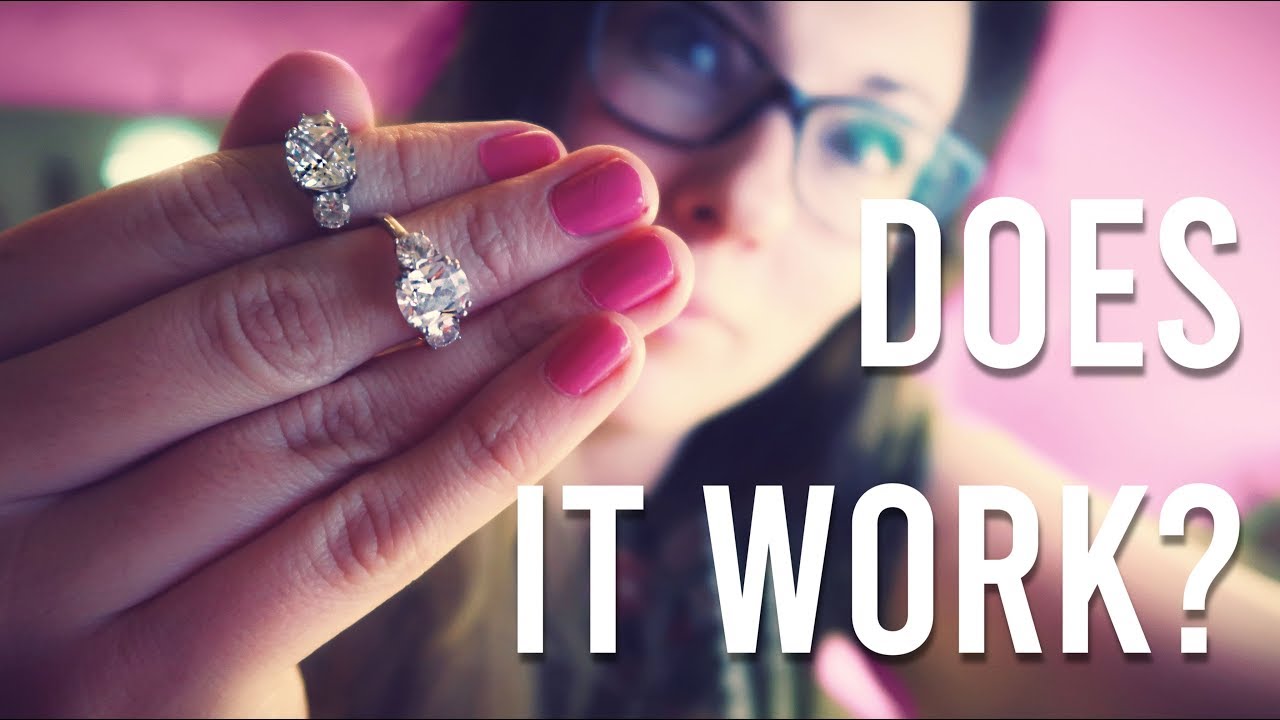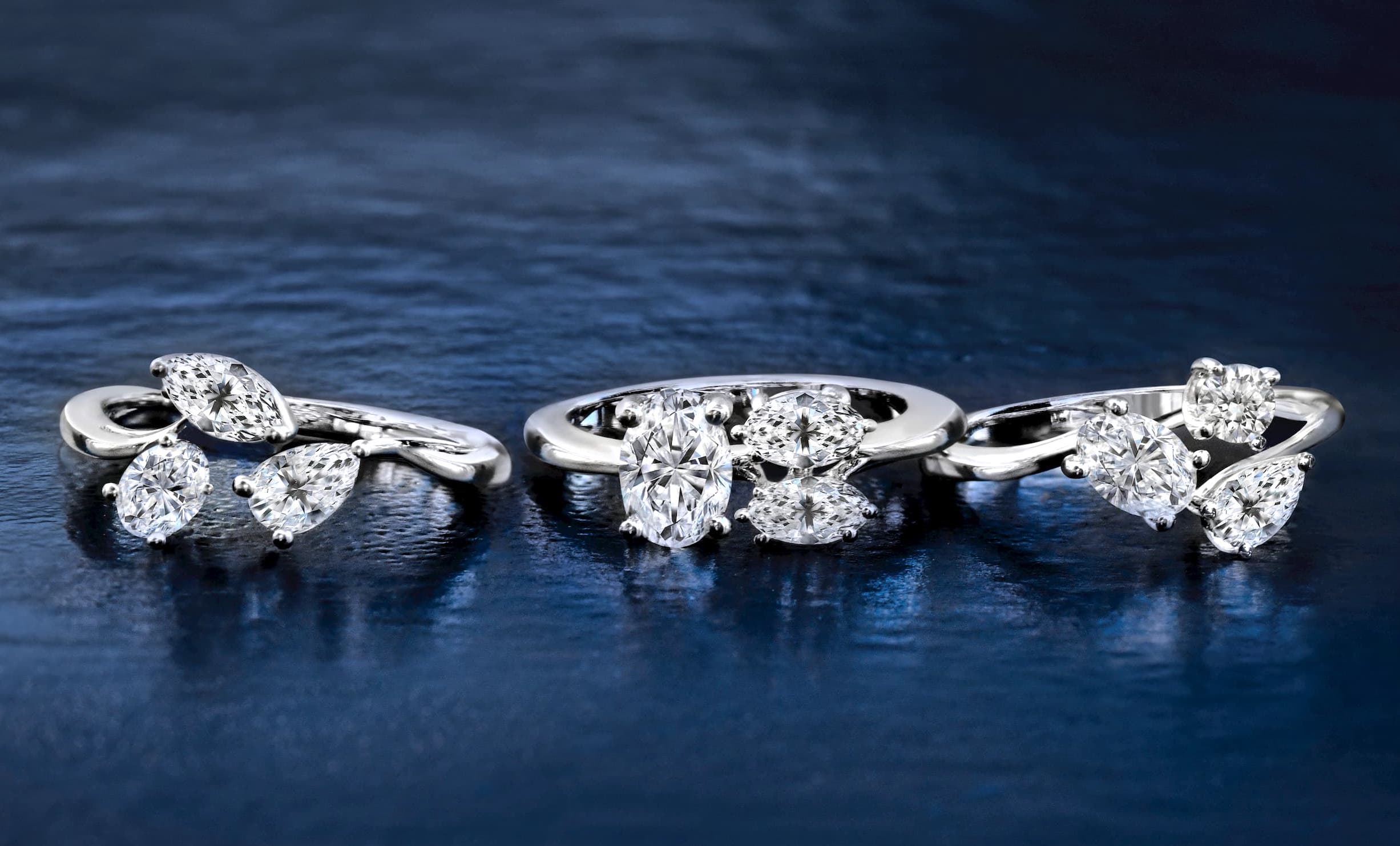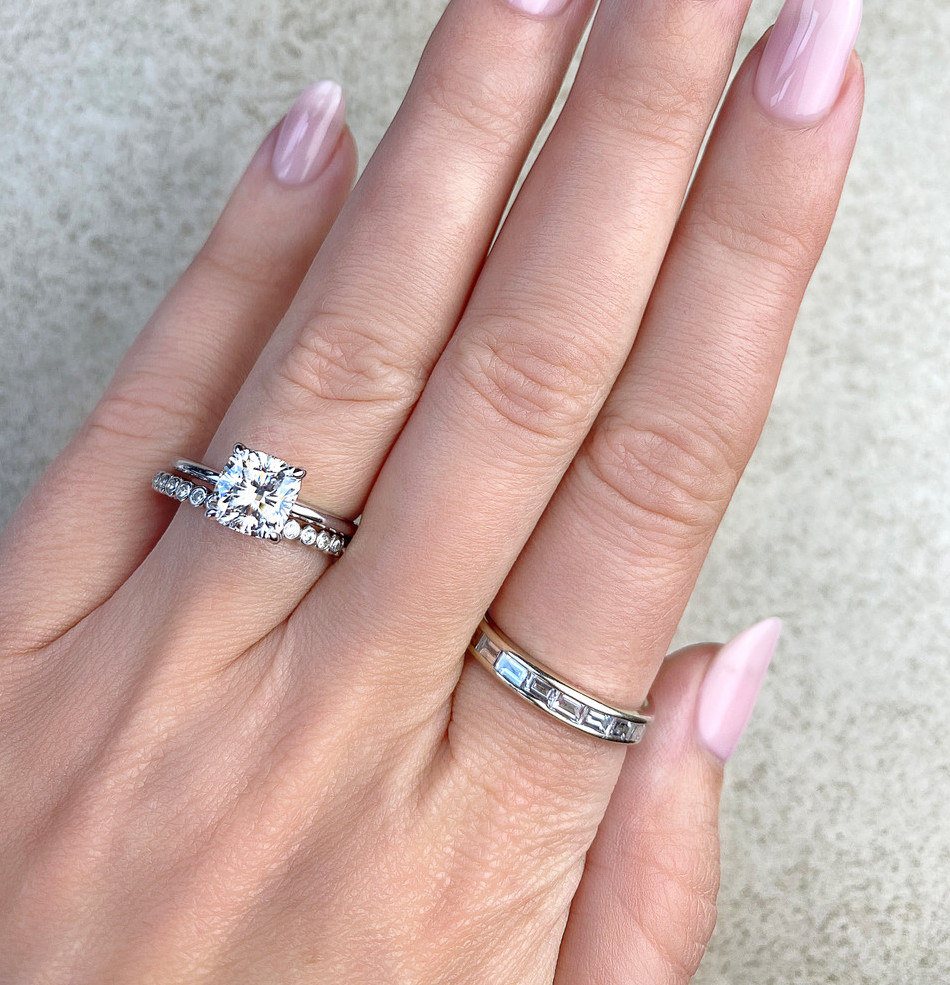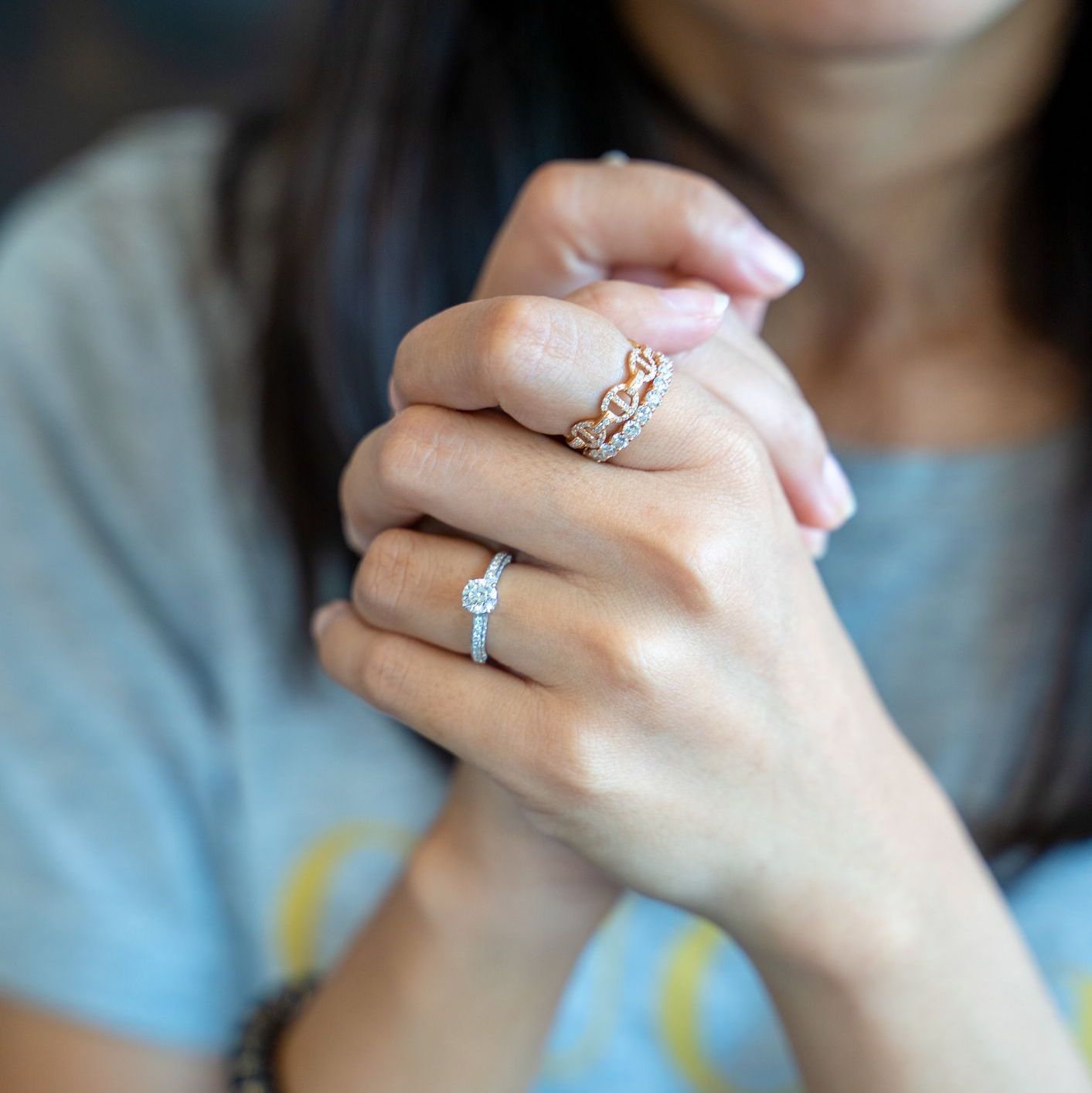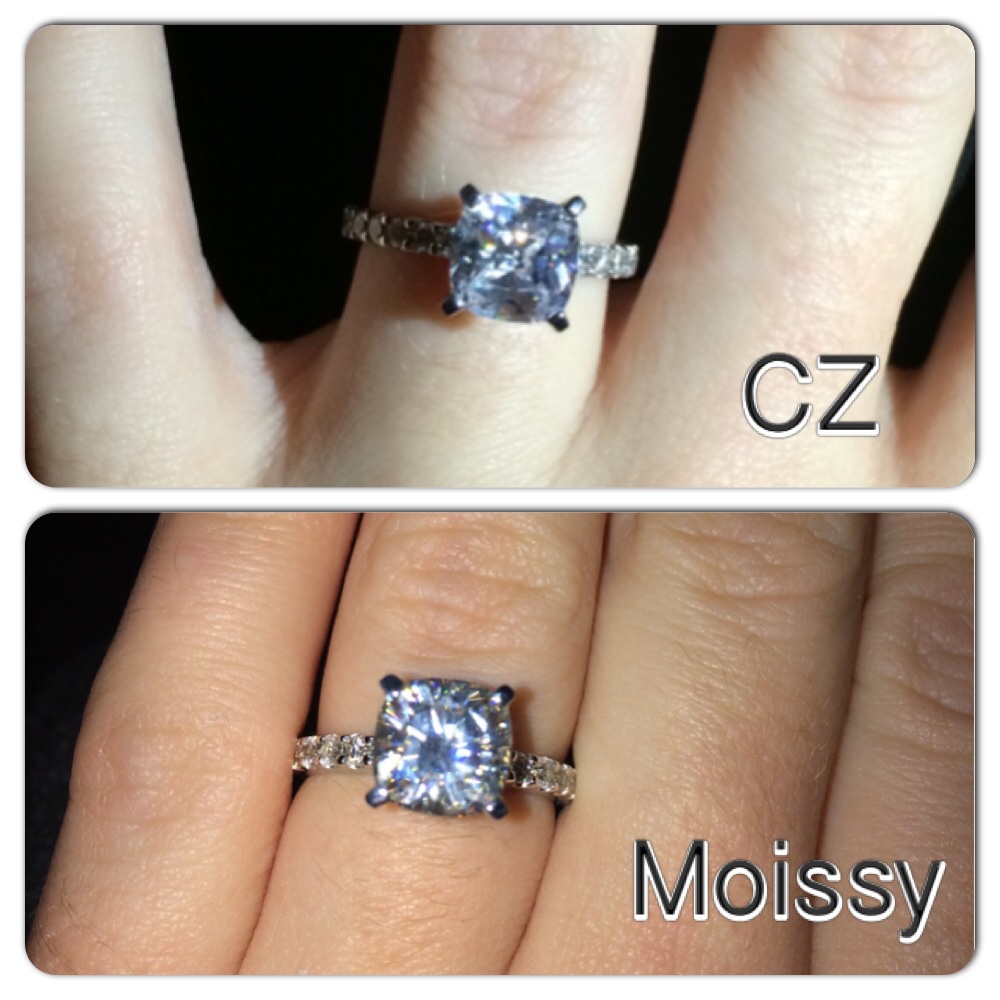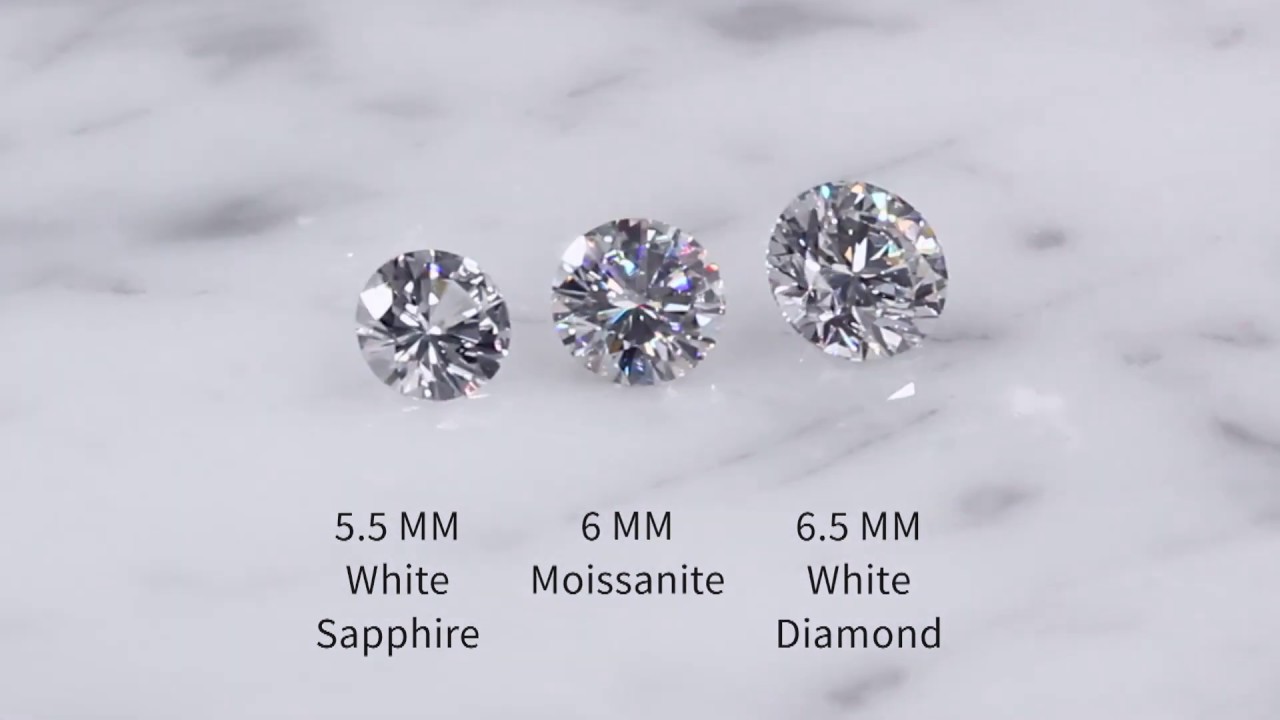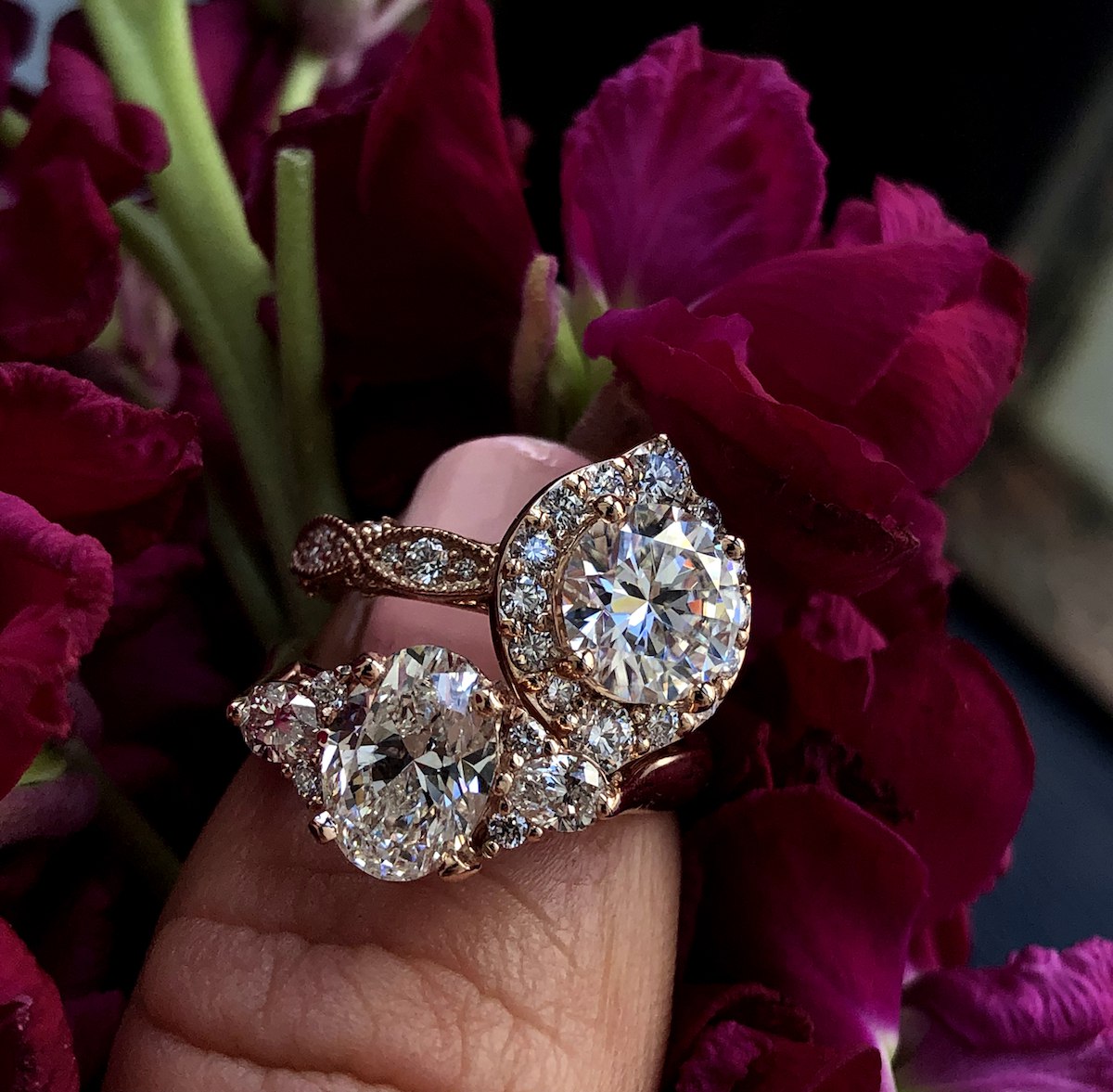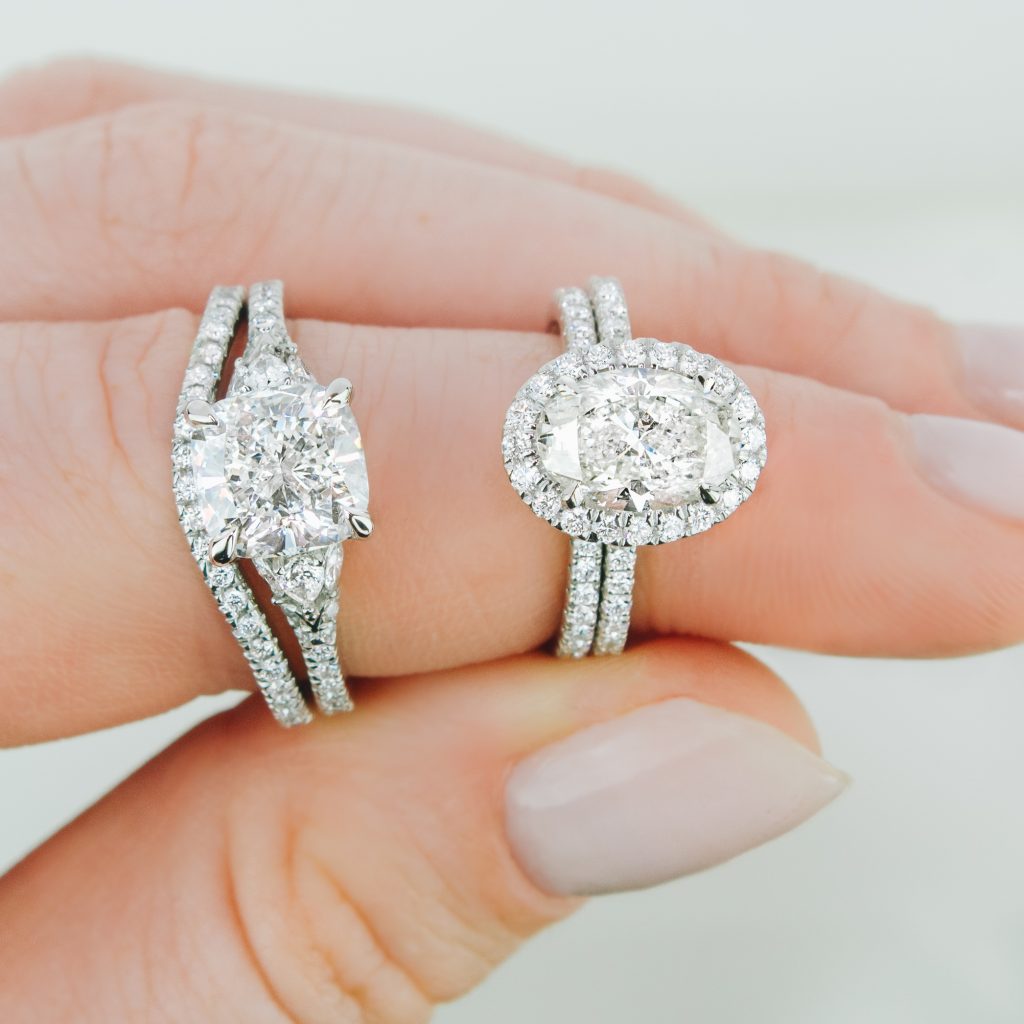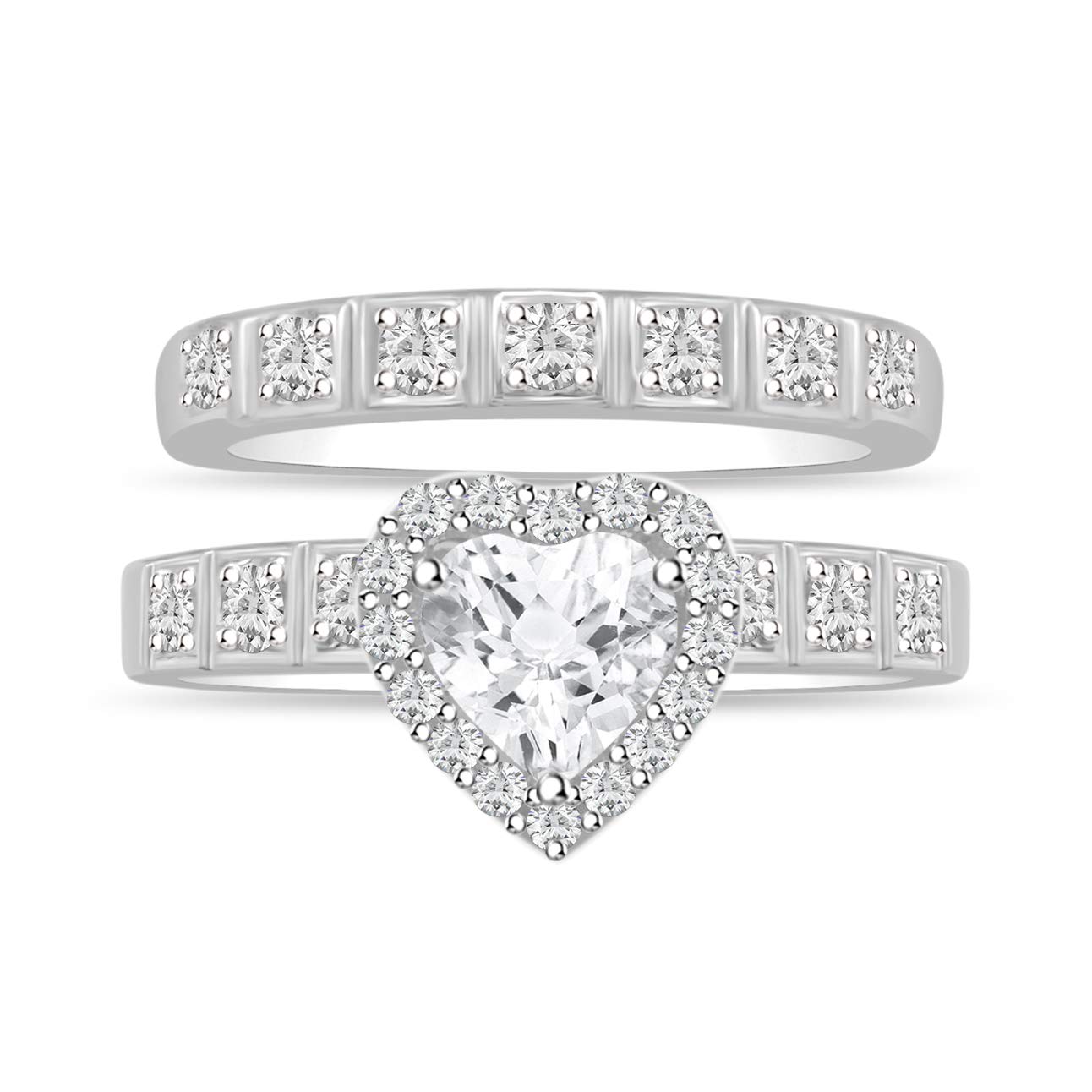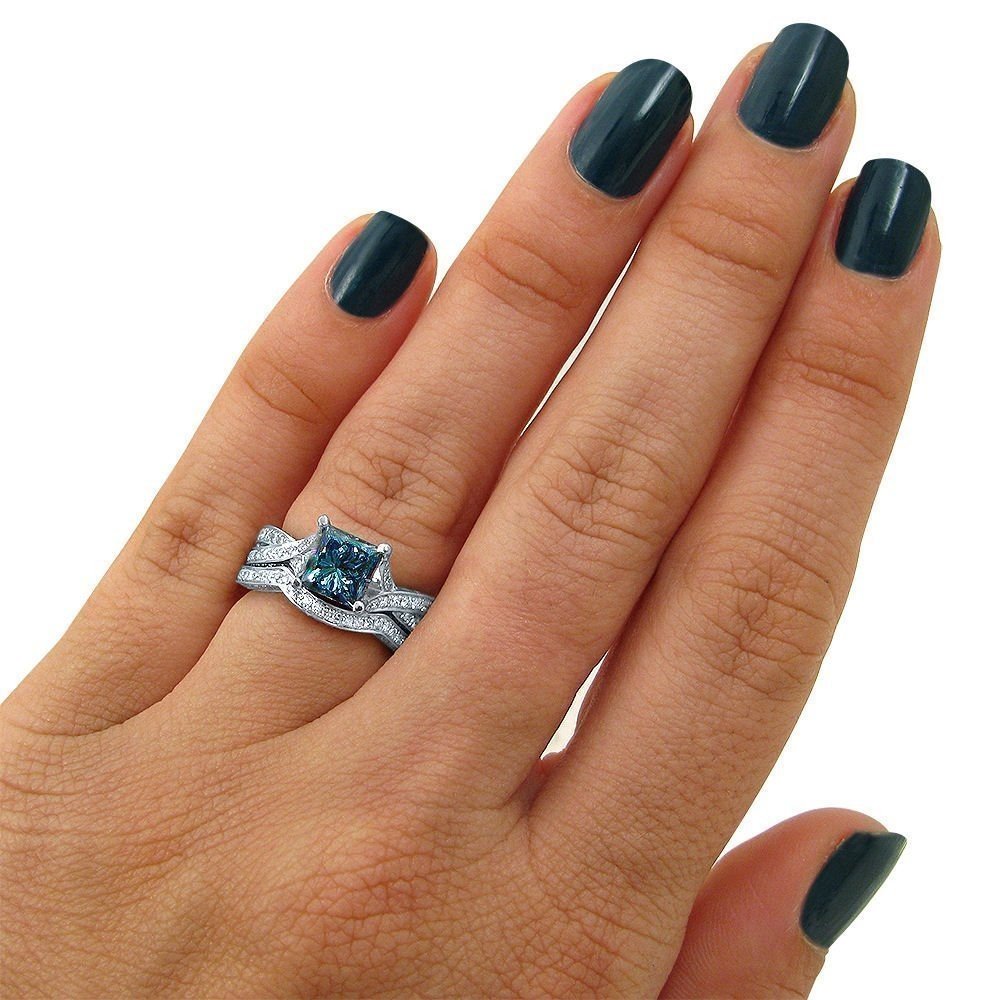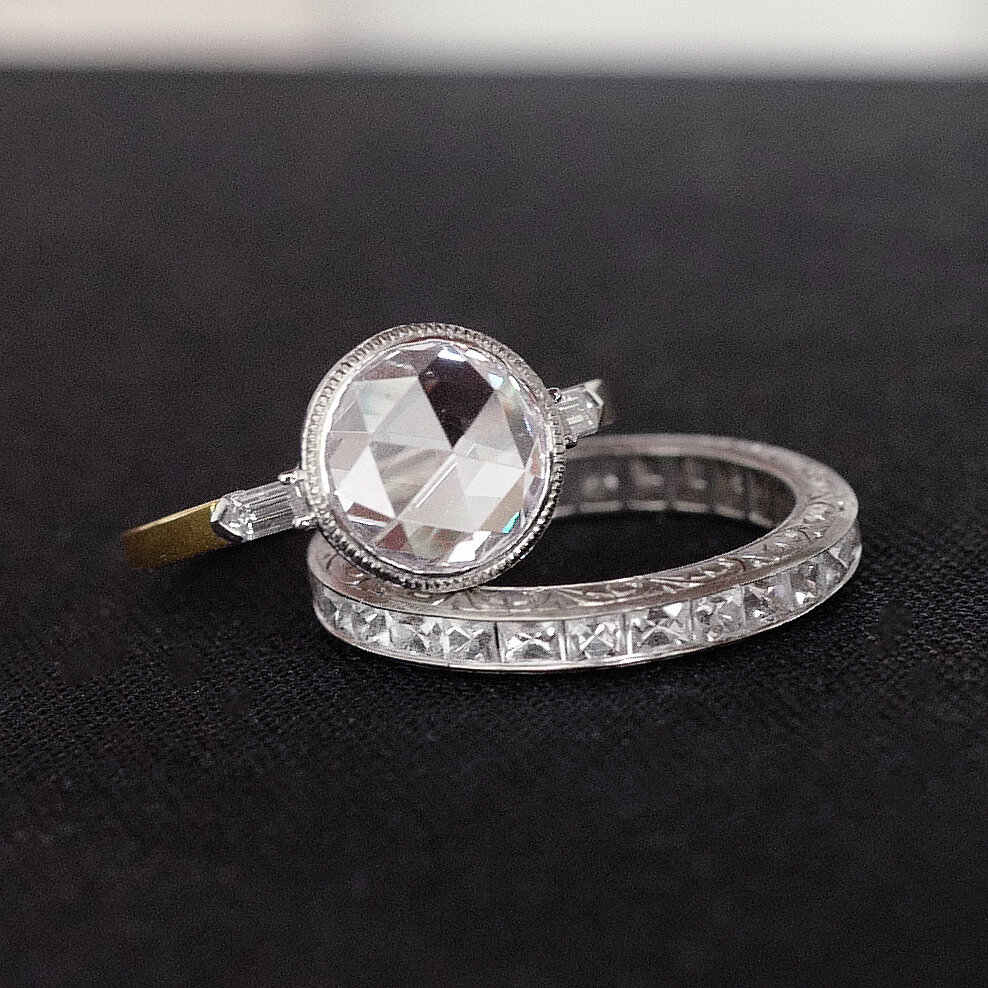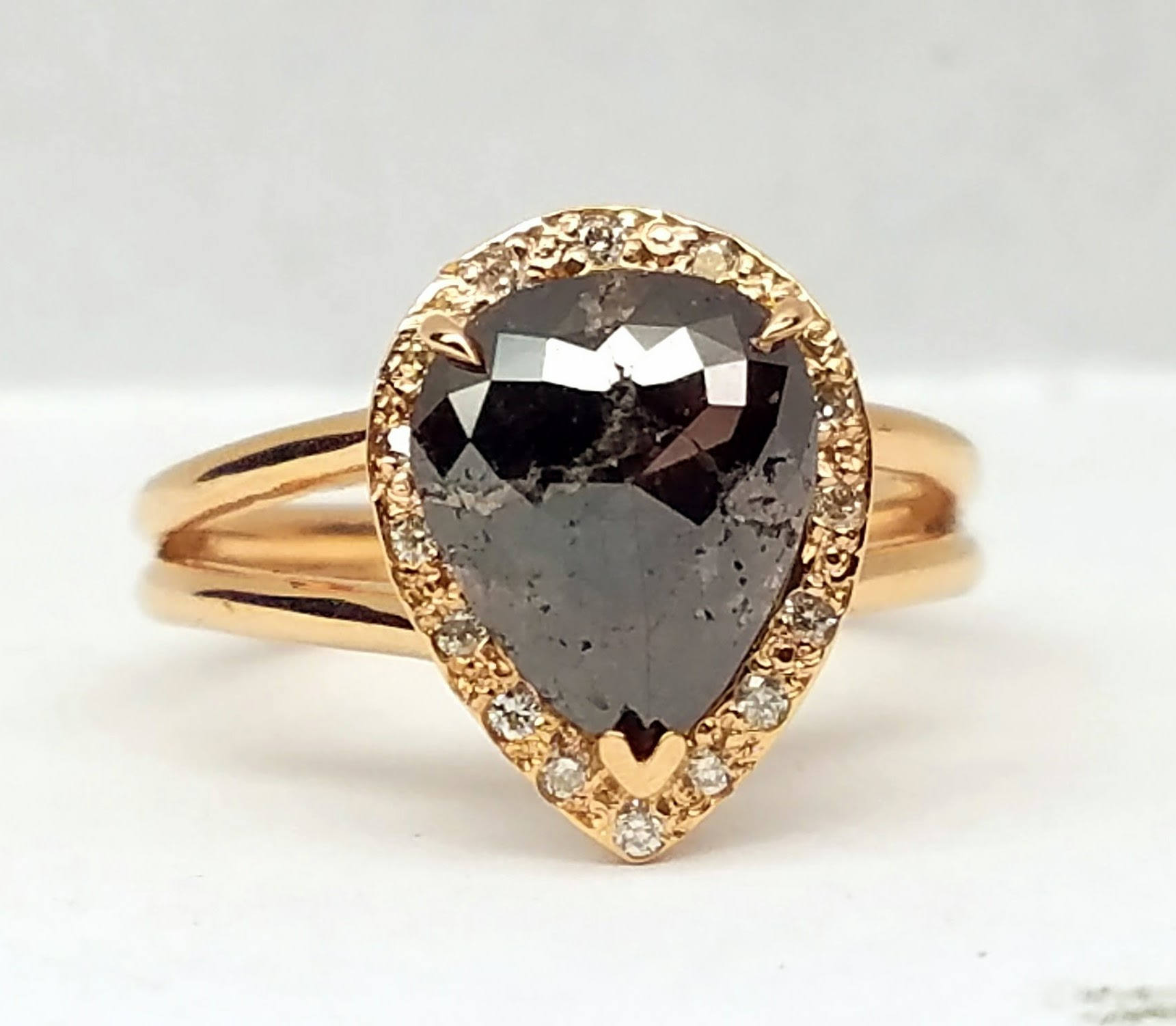A. Cubic Zirconia Vs. Diamond: How To Tell What’s Real
From its purity and hardness to its cost, there are ways to identify a real diamond from a fake one like Cubic Zirconia. Discover the most important differences here.
1. What is cubic zirconia?
Cubic zirconia is a much cheaper artificial gemstone that resembles a diamond but are very different. Cubic zirconia is an artificially produced mineral made from zirconium dioxide. CZs can look very similar to diamonds, but they have very different mineral structures. Cubic zirconia has been found in nature in small amounts, but the vast majority of jewelry is made by human hands in a laboratory. Synthetic diamonds are also made in laboratories, but they have the same carbon structure as diamonds – cubic zirconia does not.
2. Is a cubic zirconia real?
Zirconia is a real zirconia, but not a real diamond. There are a few types of stones that are used as diamond simulants, but cubic zirconia is by far the most common and realistic.
3. How can you tell if a diamond is real?
There are several ways to tell if a diamond is real. Ultimately all you can do is take it to a jeweler or gemologist who can test it with official equipment. However, there are some tricks you can use at home that can still give you a good estimate. Because diamonds are harder than any other substance, they don’t scratch or wear – they even scratch other surfaces. If you have a microscope or a magnifying glass, look at the edges of the stone’s facets – if it looks smooth, chipped, or worn, it’s probably not a diamond. The edges of a diamond’s facets often look incredibly sharp and sharp. Notice the color of the light as it enters and leaves the stone’s surface. If you turn a diamond and a CZ upside down, the bottom of a diamond emits the entire rainbow of color reflections, while CZs usually only have orange and blue flashes. This is because cubic zirconia and diamonds have different refractive indices. Diamonds also transfer heat differently – in fact, diamonds are very good at transferring heat compared to other stones and therefore heat faster in your hand than zirconia because zirconia is more insulating.
4. Differences between cubic zirconia and diamonds Look
This is the first step in identifying a zirconia trying to impersonate a diamond. Although the two stones may look similar to untrained eyes, there are some subtle differences you should be aware of. While many people erroneously believe that a diamond should look consistent, diamond fanatics understand that a “white” diamond can still have a yellow, gray or brown hue. This is what defines the DZ color scale – a white M color diamond, for example, would be slightly more yellow than an F color diamond. Cubic zirconia is more likely to be completely colorless, which is a sign of other than a diamond. Another notable difference is that a diamond has natural inclusions throughout the stone, which is a sure sign that it’s real. These inclusions can usually only be seen under a microscope.
a. Composition
Although these stones may look somewhat similar, the composition between them is very different. Consider hardness when trying to tell the difference between diamonds and cubic zirconia. Diamond is the hardest stone known to mankind, while zirconia has a much lower hardness. Diamonds are made of carbon, which gives them shine and hardness. You can also test it by checking the weight. A diamond and a zirconia may be the same actual size, but cubic zirconia is slightly denser and weighs more.
b. Costs
The last warning sign that something is wrong is the price. Although diamonds are priced differently due to size or other factors that determine the quality of a piece of jewelry, they almost always cost more than cubic zirconia. If a diamond piece of jewelry looks too low for what you’re buying, ask about the certificates to make sure it’s a real diamond and not a fake or synthetic stone considered real. While the biggest difference between diamonds and cubic zirconia is usually the price, you should use your best judgment. For example, a small diamond may cost less than a large cubic zirconia stone. Obviously, the best way to avoid pitfalls is to buy from a reputable retailer. Developing a relationship with a reputable jeweler can help you feel more confident about the diamonds you add to your collection.
B. Cubic Zirconia Vs Diamond
The differences between cubic zirconia and diamonds can be subtle or clear depending on the quality of the gemstones, while the chemical composition and physical properties between these two stones are quite different. To find out how cubic zirconia compares to a diamond, and if this is the right diamond simulator for you, read the helpful information below. Or take a look at What is Cubic Zirconia? to see the history of cz and how it is synthesized or cubic zirconia wedding sets if you are looking for cheap wedding rings. And if you have any questions about comparing cz with a diamond, comments or ratings, please use the helpful comments box at the bottom of the page!
1. Hardness of zirconia vs. Diamond
A cz simulator is not as hard as a real diamond—and a cz gem can get scratched and cloudy over time (not just because of its softer physical properties, but because cz stones tend to absorb oils). Due to the difference in hardness, cz jewelry – especially everyday cz rings and wedding rings – require much more special care than diamond rings and jewelry.
2. Cubic Zirconia Density vs. Diamond
The cz simulation weighs a little more than a diamond – this additional weight is only slightly noticeable among most diamond and zirconia rings. Rings made from large carat gemstones may have a more noticeable difference in weight compared to diamonds – but it’s still a small amount, even between larger carat gemstone rings.
3. Dispersion and refraction index of CZ vs. Diamond
The scattering properties and refractive index of a gemstone affect how light passes and is reflected by the gemstone. Scattering occurs when light passes through a gem and is scattered – or scattered – and increases the gem’s “fire” or glow. The refractive index of a gemstone is the angle of light that bends as it enters the gemstone and contributes to the gem’s “glow”. Each gemstone has a specific refractive index, and gemologists and jewelers can easily distinguish zirconia from a diamond by measuring the stone’s refractive index with a refractometer.
4. How do these values contribute to the differences between cz and a diamond?
Zirconia has a superior dispersion quality – an effect that is responsible for a stone’s “fire” – and will sparkle and reflect light more than a diamond. But cubic zirconia has a lower refractive index – which results in less shine – than a diamond, so it doesn’t “catch” light like a diamond. The differences between these values are only marginally noticeable between a high-quality Cubic Zirconia simulator and a diamond – and most people can’t tell the difference between the two just by looking. However, larger carat cubic zirconia stones will sparkle and sparkle more than a large diamond, but they will not achieve the intriguing brilliance and depth of a diamond, and as the carat size between these two stones increases, the visual differences become more apparent.
Larger carat cz rings, in particular, can look very fake. For couples looking for inexpensive engagement and wedding rings that still look authentic, rings made from smaller cz gemstones – usually around 1 carat or less – will look more like real diamond rings.
5. Impeccable values in zirconia vs. Diamond
Zirconia simulators are always perfect – whereas diamonds almost always have some small inclusions in their stones. An absolutely perfect diamond is extremely rare and also extremely valuable. The differences between perfect gemstones and lightly closed gemstones are usually invisible to the naked eye – in most cases, a high-performance jeweler’s loupe is required to see these differences (unless the diamond is clean for the eyes and has visible inclusions or beauty mistake). Perfection is another characteristic that jewelers can use to distinguish cubic zirconia gemstones from diamonds.
6. Cost of cubic zirconia and diamonds
Cubic zirconia simulants are – of course! – much much cheaper than real diamonds. A hand-cut one-carat cubic zirconia gem costs about $20, while a one-carat diamond of reasonable cut, color, and clarity sells for about $1,500. The price differences between cubic zirconia and diamonds become even more pronounced as the carat size increases. A mediocre 2 carat diamond will sell for around $5,000 (although many medium quality 2 carat diamonds start at around $7,000 and up), while a simulator made from 2 carat cubic zirconia sells for around $30 – dollar is affordable.
The price between fancy colored diamonds and fancy colored zirconia simulators is even higher. A fancy little yellow diamond can cost upwards of $11,000, but a fancy yellow zirconium costs around $20. If you’re looking for an affordable engagement ring in fancy colors, a fancy zirconia ring might be the perfect solution. (The colors of the yellow and pink zirconia rings are the most popular styles this year). While affordable gemstones – such as aquamarine and garnet – they also make beautiful and long-lasting wedding rings.
C. Cubic Zirconia Vs. Diamonds
Our goal is to bring you the best diamonds and gemstones at the best possible price. For this reason, we will let you know whenever we see an attractive discount, special offer or promotion from one of our preferred suppliers. When looking for a lab-made stone for your engagement ring, you will find that there are many options to choose from. Laboratory-grown diamonds, moissanites, synthetic white sapphires and cubic zirconia are the most popular artificial stones. Cubic zirconia is another man-made stone to consider when you’re on a tight budget and looking for something without conflict.
1. Zirconia – what is it?
Cubic zirconia is classified as a diamond simulator – a stone that resembles natural diamonds but is made of a different material. Natural and laboratory-grown diamonds are made from carbon, while cubic zirconia is made from zirconium dioxide (ZrO2). The cubic part of the name comes from the fact that the stone has a cubic crystalline form. Diamonds also have a cubic crystalline form, so cubic zirconia is a similar large diamond.
The material was originally used by scientists who experimented with various synthetic materials for use in lasers. In the 1970s, scientists in Russia perfected the technique of growing single cubic zirconia crystals. The clear, sparkling crystals were used to create mass jewelry. Today, zirconia crystals are a popular type of diamond in necklaces, earrings, bracelets and rings of all kinds.
2. Zirconia vs. Diamond
How does zirconia compare to diamond? Let’s compare some of the key features.
a. Beauty
Like diamonds, Cubic Zirconia is naturally colorless. In fact, most natural diamonds are slightly yellow or brown. Cubic zirconia is completely transparent, comparable to a D color grade. Diamonds emit white light in natural light. Cubic zirconia shows more fire. Both effects are beautiful and depend on personal preference. However, if you’re looking for that revealing diamond sparkle, you won’t find it in a cubic zirconia stone.
Cubic zirconia can also be colored with different elements, resulting in a rainbow of tones. There are even multicolored cubic zirconia stones if you want a really unique look. These stones are affordable and unique alternatives to sophisticated colored diamonds or colored gemstones such as emerald, ruby and sapphire. Natural diamonds (and even laboratory-grown diamonds!) have flaws – small imperfections within the stone called inclusions. Cubic zirconia has no natural internal defects. Cubic zirconia stones are polished and polished after production. They can be cut into many common diamond shapes such as round, princess, pear and pillow.
b. Durability
When looking for an engagement ring, it can be tempting to choose a cubic zirconia stone simply for the price. Cubic zirconia rings are much cheaper than diamond rings and look the same at first glance. That beauty won’t last – cubic zirconia only lasts about two years before its beauty fades. Natural diamonds and other gemstones are expensive, but they last a lifetime.
Diamonds are known for their hardness, which is 10 on the Mohs hardness scale. Diamonds are very durable and don’t scratch with everyday use. Cubic zirconia is an 8.5 on the hardness scale. It doesn’t seem like much of a difference, but it is. Cubic zirconia is easily scratched in everyday use – even house dust can scratch stones. Cubic zirconia also absorbs oils from skin and everyday products. After a few years, even the brightest zirconia will look cloudy, scratched. This isn’t a big deal if you’re looking to replace your ring every few years, but it’s important to consider when comparing cubic zirconia to diamond.
c. Price
Cubic zirconia is very cheap because it is mass produced and synthetically produced. A cut and polished one-carat zirconia stone costs $20 and a similar two-carat stone costs about $30. This is much cheaper than diamonds, which start at $1,800 a carat and increase significantly as the size increases.
Engagement rings made from cubic zirconia vary in price and are highly dependent on the metal with which the setting is made. Rings in the $20 to $40 price range are usually made of brass, silver or copper with a gold or platinum coating. The coating on these rings usually wears out quickly, so it is advisable to avoid them. Likewise, many websites sell zirconia engagement rings that cost $100 or more. These rings have bands made from the finest metals such as 14K gold or platinum. Zirconia stones scratch and fade very easily and lose their luster after about two years. It’s not worth spending the extra money on a better bracelet if you’re replacing the entire ring anyway. Sterling silver or stainless steel are good metals that can be combined with zirconia. These rings cost from $50 to $90. With sterling silver or stainless steel, you don’t have to worry about the coating peeling and you don’t pay a lot to harden.
3. Is Cubic Zirconia Right for You?
Everyone has their own personal preferences when it comes to engagement rings. Cubic Zirconia is the best option if you are on a very tight budget. Look for engagement rings made of stainless steel or sterling silver with zirconia. They’re good, but cheap, and both the band and the rock last a few years. A cubic zirconia engagement ring is also a great choice if you think your taste will change over time. Diamonds last forever, and choosing a stone and a stud you’ll need for years to come can be a daunting task! Cubic zirconia rings are very inexpensive, so you can pick one and wear it for a while to see if you like it.
Cubic zirconia is also a popular choice for travel rings. If you have a diamond engagement ring and want to leave it at home on vacation, at the beach or at the pool, or during outdoor activities like hiking or skiing, consider a cubic zirconia ring. No one will be able to tell the difference! You don’t have to worry about your real ring being damaged, lost or stolen.
4. Summary
Cubic zirconia is a popular alternative to diamond. It’s affordable, conflict free and looks like a real diamond. The disadvantages are the lack of durability – with daily use it loses its shine and shine in a few years. If you choose a zirconia stone for your engagement ring, you should pay attention to a quality bracelet made of sterling silver or stainless steel.
